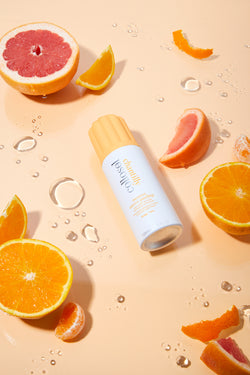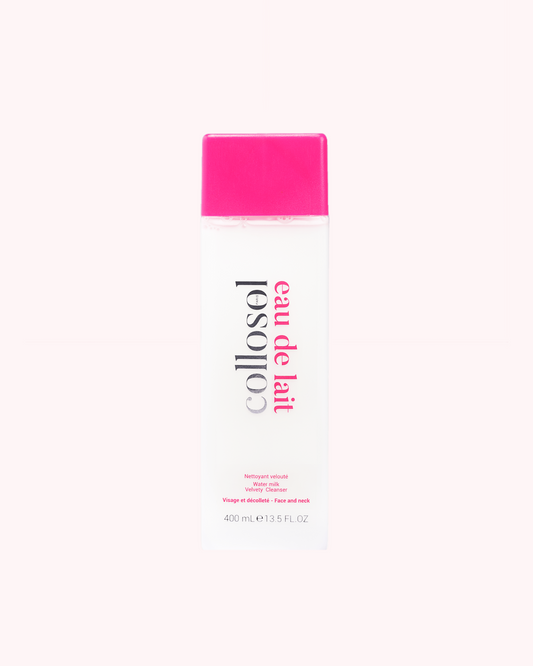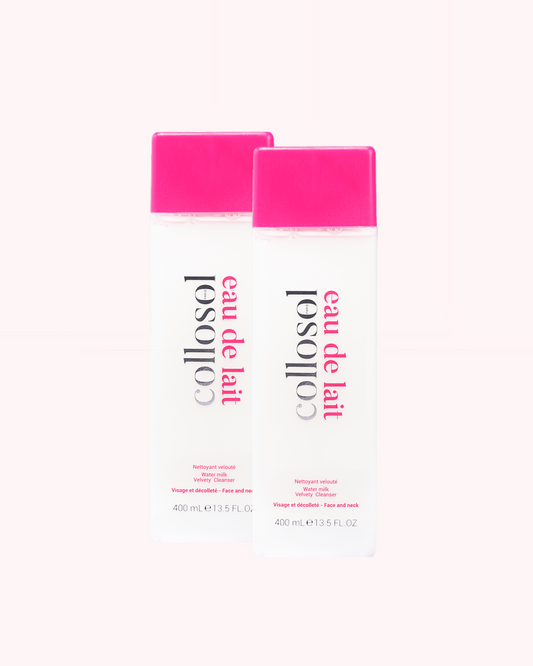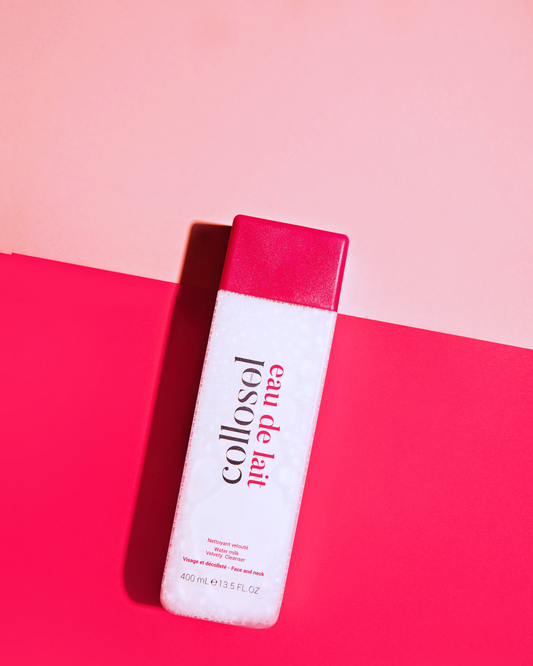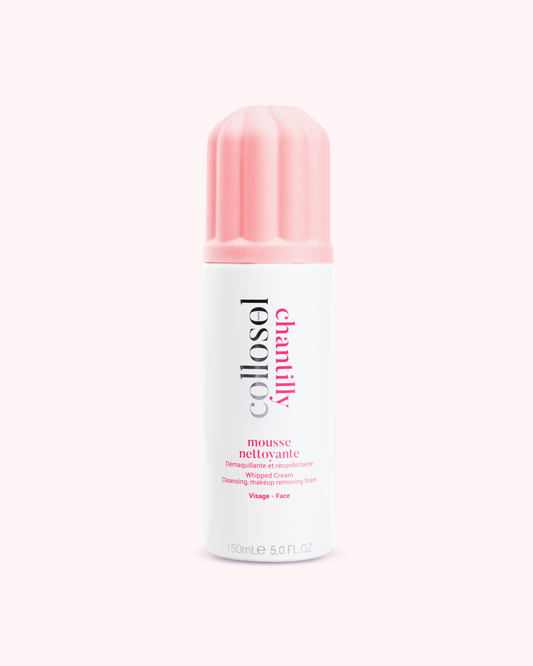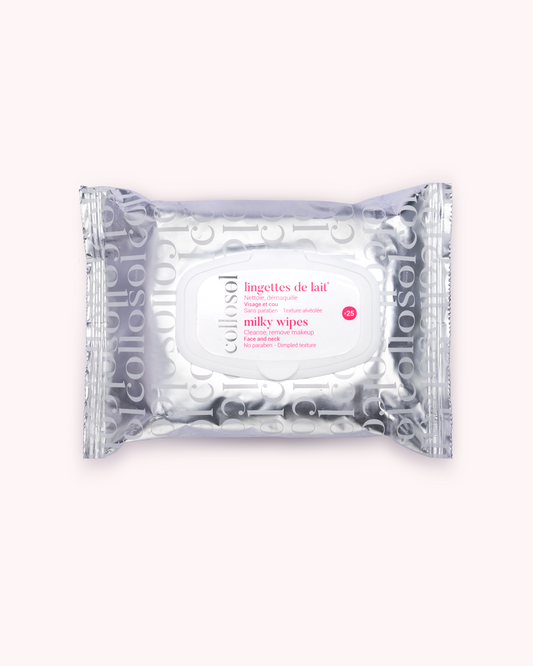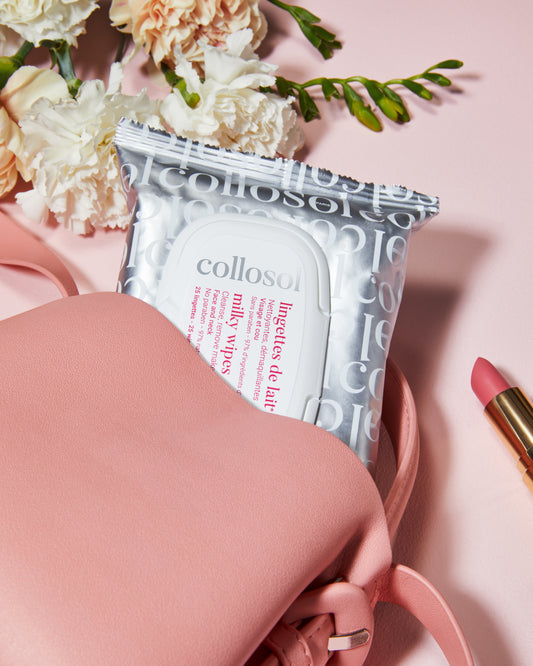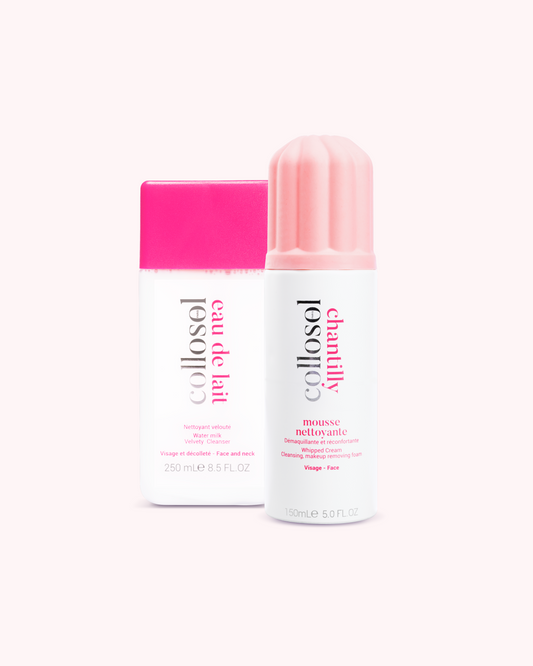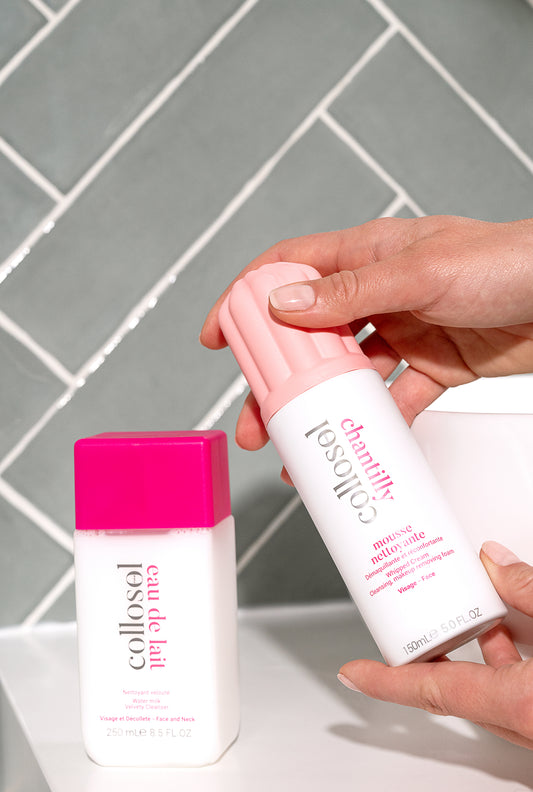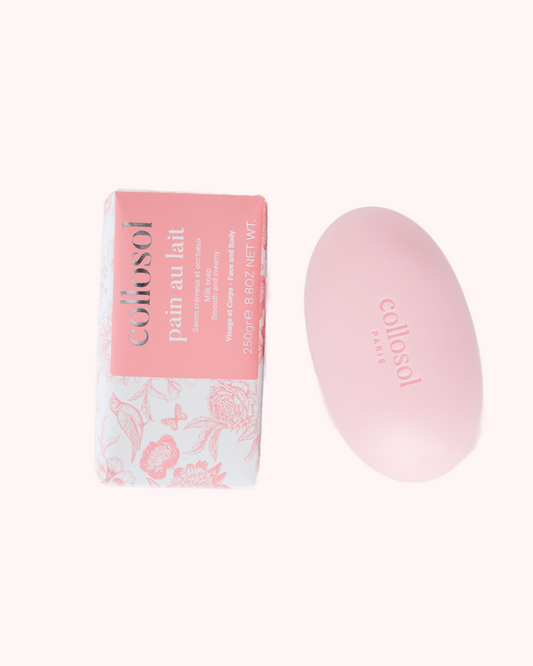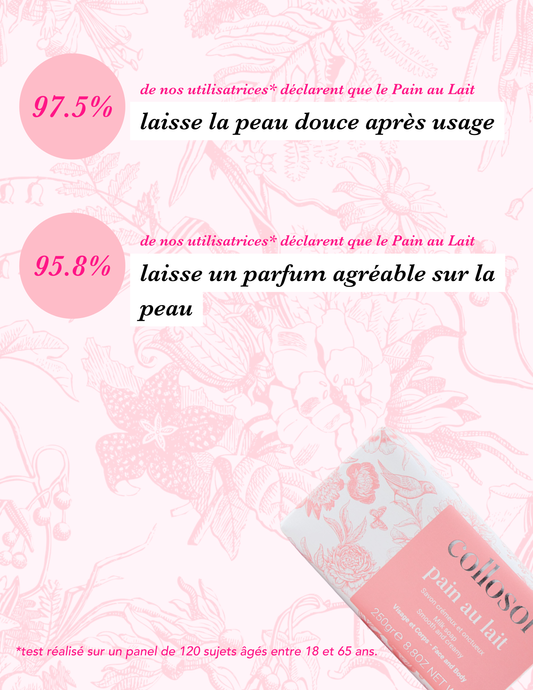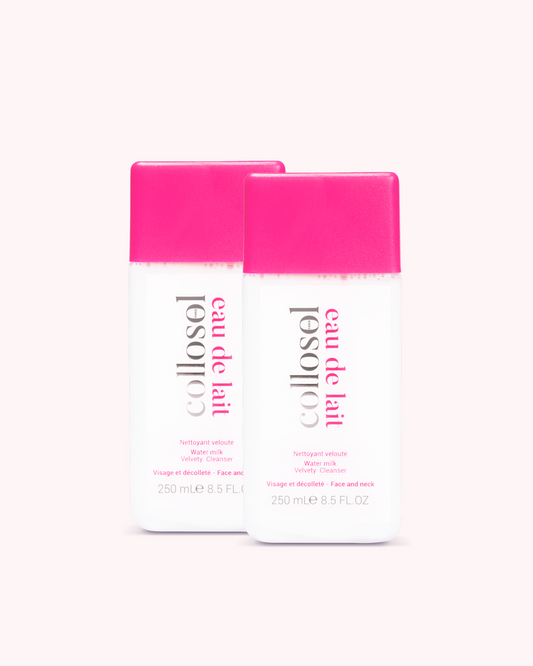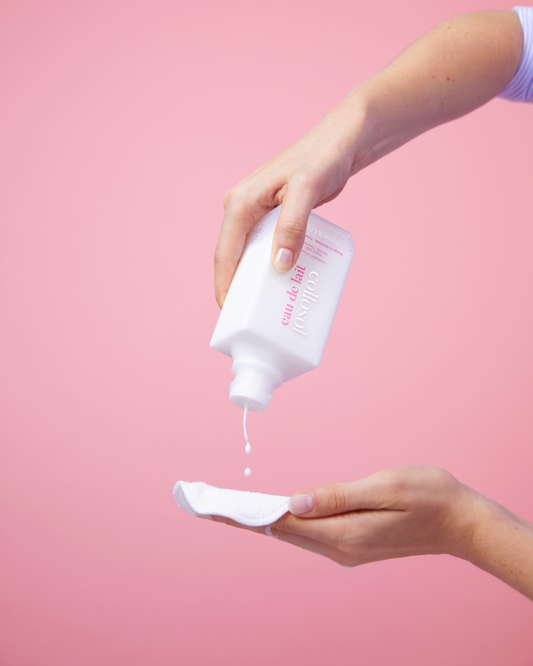How to get oily skin and excess sebum under control
Caring for oily skin can be difficult. From excess sebum to shine and blemishes, say goodbye to your oily skin woes by adopting a good routine and the right skin care habits. Follow our step-by-step guide!
Why is my face oily?
Oily skin may be caused by a number of factors:
• Hormones are the number one cause. Puberty is a peak period for oily skin, as the hormones stimulate elevated sebum secretion which leads to blemishes. However, hormonal fluctuations can also explain why some people experience acne as adults.
• Pollution is a harmful and disruptive force for skin. It increases cell oxidization and triggers break-outs.
• Using harsh and unsuitable products can induce a natural reaction that causes skin to become oily through the over stimulation of the sebaceous glands. In response to this aggression, your skin invokes a self-defense mechanism calling on its ultimate protective agent: sebum.
What are the signs of oily skin?
Your face naturally secretes sebum on the skin’s surface, which acts as a natural protective film. Nonetheless, skin may become imbalanced and secrete excessive amounts of sebum. Oily skin is characterized by the following signs:
• The epidermis is oily and shiny, especially in the T-zone;
• Pores are dilated;
• Comedones and blackheads appear, as well as any other impurities that may clog the pores;
• Foundation no longer stays in place and several applications of mattifying powder are needed in a single day;
• Skin is thicker and more uneven.
How to prevent excess sebum
To effectively combat oily skin, it is essential to adopt a suitable oily skin routine. This routine is comprised of several steps, some to be completed daily and others on a weekly basis. Two daily steps are an absolute must to restore clean and supple skin: make-up removal and hydration.
Cleansing oily skin
Make-up removal and cleansing are the bedrock of your beauty routine. Be careful, however, not to strip your skin. Our first tip is to opt for a gentle approach. In terms of both your method and your products, gentleness is the key to caring for your skin. When choosing a make-up remover and cleanser, go for formulas rich in water and milk. Lactic acid helps exfoliate the skin while also boosting the cell renewal rate and improving skin’s tone and elasticity. Thanks to its half-water/half-milk texture, Collosol Eau de Lait removes make-up and cleanses without altering your skin’s hydrolipidic film. Its paraben-free, surfactant-free and dermatologically tested formula is perfect for your sensitive skin. In the morning and evening, use a few drops of the scented cleansing lotion to wash away even the most stubborn make-up, without damaging your skin. Added bonus: applied to your face, its comforting orange blossom fragrance helps soothe your skin. Once your make-up has been removed, reach for a gentle organic soap or a cleansing gel. Avoid overly detergent products which, contrary to popular belief, actually increase oil production.
Caring for oily skin
Yes, just like combination or normal skin types, oily skin needs hydration too. Without proper hydration, the face tends to produce more oil to compensate, thus becoming oily. That said, you need a hydrating product with an ultra-light texture. Opt for cosmetic products that are designed for combination to oily skin, non-comedogenic and, in some cases, provide a mattifying effect. This will help you hydrate your epidermis all while restoring your skin’s balance in the long term.
Excess sebum: 5 tips to combat oily skin
As you now know, make-up removal and applying a hydrating cream are the two pillars of your battle strategy against oily skin. But you will need to expand your arsenal to optimize your beauty routine. Here, we share our 5 tips to get rid of blemishes and shine.
1- Steam baths
Steam baths release hot moisture in the air to open up the pores, while sweat removes all the toxins accumulated in the skin. The steam bath is one of the most effective treatments for restoring clean, shine-free skin. A steam bath can easily be created at home once a week, or every 15 days for very sensitive skin. For oily skin, use rosewood, lemon or eucalyptus essential oils. If you have acne-prone skin, opt for purifying essential oils, such as tea tree essential oil, known for its balance-restoring and anti-blemish properties. Try taking your steam bath in the evening and take advantage of your newly clear skin to apply your nighttime routine comprised of a purifying serum and a mattifying hydrating cream.
2- Deep cleansing with exfoliation
Opt for gentle, chemical exfoliants and avoid coarse grain mechanical exfoliants which tend to irritate and damage the skin. Instead, choose gentle exfoliants made with yogurt or oats, for example. Avoid exfoliating more than once a week. When done too often, deep cleansing will actually make oily skin worse.
3- Adapted diet
High sugar and fat intake may also lead to oily skin. If you have oily skin, it is best to eat healthy foods rich in antioxidants and omega-3 fatty acids. Fruits and vegetables contain high amounts of antioxidants; salmon, tuna, walnuts and flax seeds are rich sources of omega-3 fatty acids. Avoid greasy, fatty foods that will only aggravate oily skin, and replace them with healthy fats like nuts, seeds, avocados and fish.
4- Good face mask
Oily skin is shiny, especially in the T-zone. If you decide to care for your oily skin with a DIY face mask, be sure to select the best shine-control ingredients that nature has to offer. Once or twice a month, apply a green clay mask, avoiding the eye contour area. Green clay is a mineral renowned for its purifying, cleansing and absorbent properties. Green clay masks are recommended for all skin types but are especially suited to oily skin in need of purifying care. Also, strawberry-based masks are excellent for this skin type. Rich in vitamin C and vitamin B8, strawberries are packed with natural antioxidant power to remedy skin problems. Their use in skin care is especially effective on shiny skin.
5- Sun protection
When it comes to oily skin, the sun can be deceptive. Initially, the sun dries out spots, thus reducing their appearance. Over the long term, however, the sun causes the skin on the face to thicken and retain sebum production. The result: when your skin returns to its normal thickness, it will expel any substances clogging it up to this point— the perfect recipe for spots and shine! To prevent this inflammatory, acne-provoking response, your only option is to protect your skin from the harmful effects of the sun. Adopt the habit of applying sun cream daily. Opt for a water-based, non-comedogenic formula. Sun creams in the form of a gel or mattifying powder may help protect your skin without adding oil and clogging your pores. Having oily skin is no longer a day-to-day problem, when you know how to take care of it. To do so requires the right cosmetics and good skin care habits. Make-up removal and cleansing every day is not an option, but a necessity! Following a specific routine for your skin type helps reduce the appearance of pores and shine in the T-zone. With a bit of patience, a good make-up remover, a serum and a suitable hydrating cream, your skin’s balance and purity will be restored!


